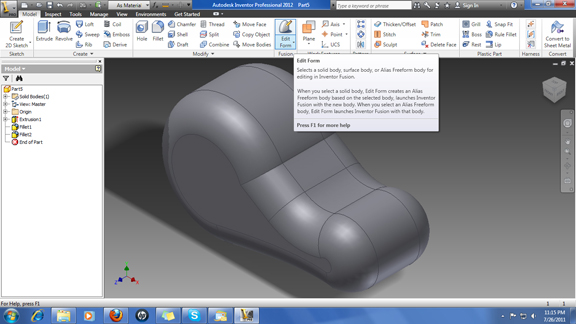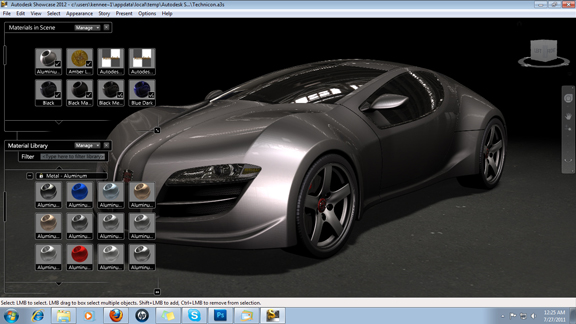July 27, 2011
Freeform, direct, and parametric modelings are like three talented engineers with different personalities. The first is a genius with wild imagination, unbound by pragmatic concerns. The second, an impulsive new kid, has the uncanny ability to come up with quick fixes for everything. The third is a veteran, who likes to think ahead and work methodically. As their boss, you know you can get a lot more done if you can get the three to move into the same corner and work together. Trouble is, they don’t get along. So, begrudgingly, you come up with a sensible compromise. You keep them in three different offices; you let their ideas flow through you; and you serve as their translator.
In certain industry segments—consumer goods and automotive, to name but two—unifying freeform surfaces and mechanical features is the only way to design. In designing mobile phones and hybrid vehicles, combining aesthetic beauty and mechanical elegance is not optional; it’s essential. In the absence of a consolidated 3D modeler, engineers have to make do with software juggling: Create complex surfaces and organic shapes in one package, add mechanical features in another, and, when needed, use another package to make direct edits.
In Autodesk Inventor Professional 2012, part of Autodesk Product Design Suite 2012, three modeling modes take a few steps closer toward one another. They’re not exactly moving into the same house; but they’re learning to work together much better.
In Inventor 2012, you can execute freeform (Alias-style) edits to a parametric part by choosing Fusion > Form Edit. This brings you right into Autodesk Inventor Fusion (a separate program window), where you can poke, pinch, pull, and push Spline edges to reshape your part’s geometry in ways not usually possible in mechanical CAD programs.
Fusion also offers a Symmetry command. Once you turn this command on, you’ll be prompted to choose a symmetry plane. Afterward, any edit you make is replicated on the opposite of the plane, in reverse. The feature will be useful for creating symmetrical design with complex surfaces that are not easy to duplicate (bicycle helmets and sunglasses, for instance).
While in Fusion, you may also make direct edits—rotate faces on previously extruded features, for example—with little or no regard for parametric history. The combination of freeform and direct editing tools in a single environment makes Fusion ideal for making adjustment to imported parts and adding complex surfaces.
Once you’ve completed your Fusion edits, you can choose Return to Inventor to move back to Inventor’s classic parametric mode (in essence, shutting down Fusion and importing your part back to Inventor). The freeform edits you made will now appear under your Inventor part’s feature tree, labeled Alias objects. From this point on, you may continue to add features to your design using parametric methods.
Shuttling CAD geometry back and forth between two different program windows—Inventor classic and Inventor Fusion—is not ideal, but the workflow is smooth and manageable. Also, Inventor has improved significantly in its ability to interpret direct edits executed in Fusion as parametric steps upon reentry.
Inventor serves as the core of Autodesk Product Design Suite, which also includes Autodesk Showcase, a program you can use to create ray-traced renderings and simple animations (fly-thoughs, walk-throughs, and orbits). Unlike Autodesk 3ds Max (also included in the suite), Showcase is much easier to master and pick up, so you can be productive with it in a short time. In addition to typical rendering tools, Showcase gives you a way to compare scenes in split screens, useful for reviewing different versions of the same design (say, the came vehicle in two different paints).
Product Design Suite, like other bundles in Autodesk’s 2012 portfolio, is the company’s ambitious push to sell comprehensive lists of titles, put together with different users in mind (Autodesk Building Design Suite for architects, Autodesk Product Design Suite for engineers and product designers, and so on). A review of Autodesk Product Design Suite is set to appear in print in the next issue of Desktop Engineering.
For more, watch the video report below.
Subscribe to our FREE magazine, FREE email newsletters or both!
About the Author
Kenneth Wong is Digital Engineering’s resident blogger and senior editor. Email him at [email protected] or share your thoughts on this article at digitaleng.news/facebook.
Follow DE









